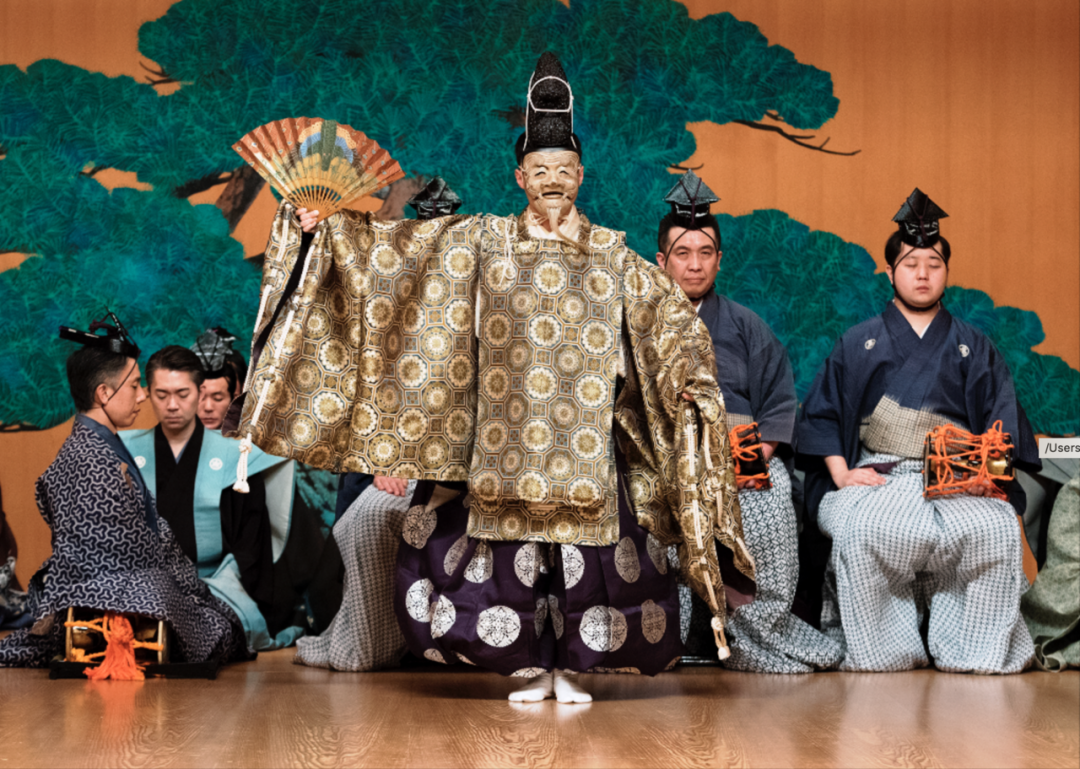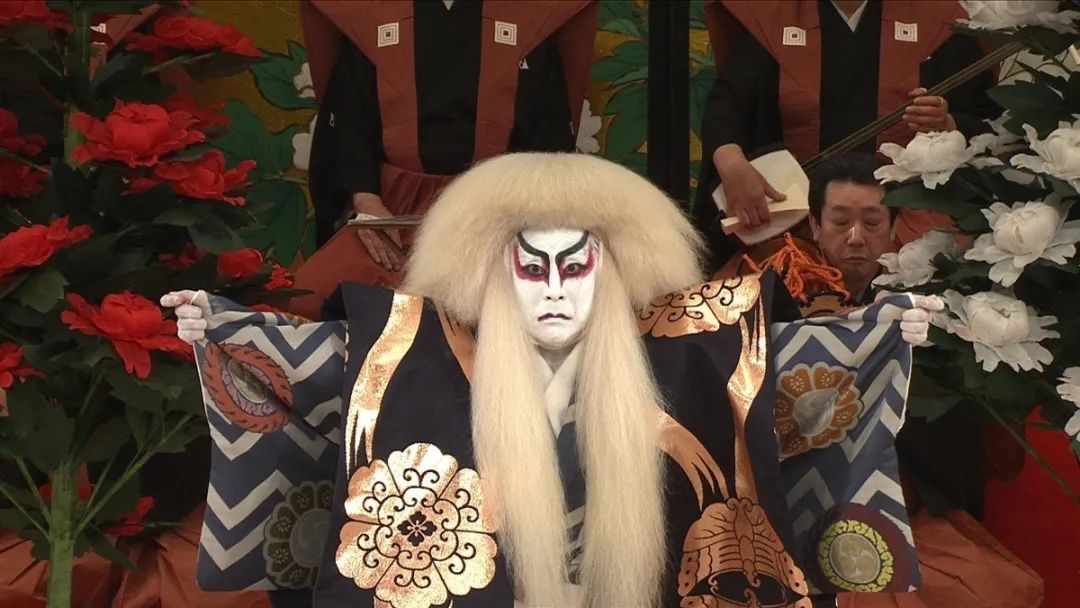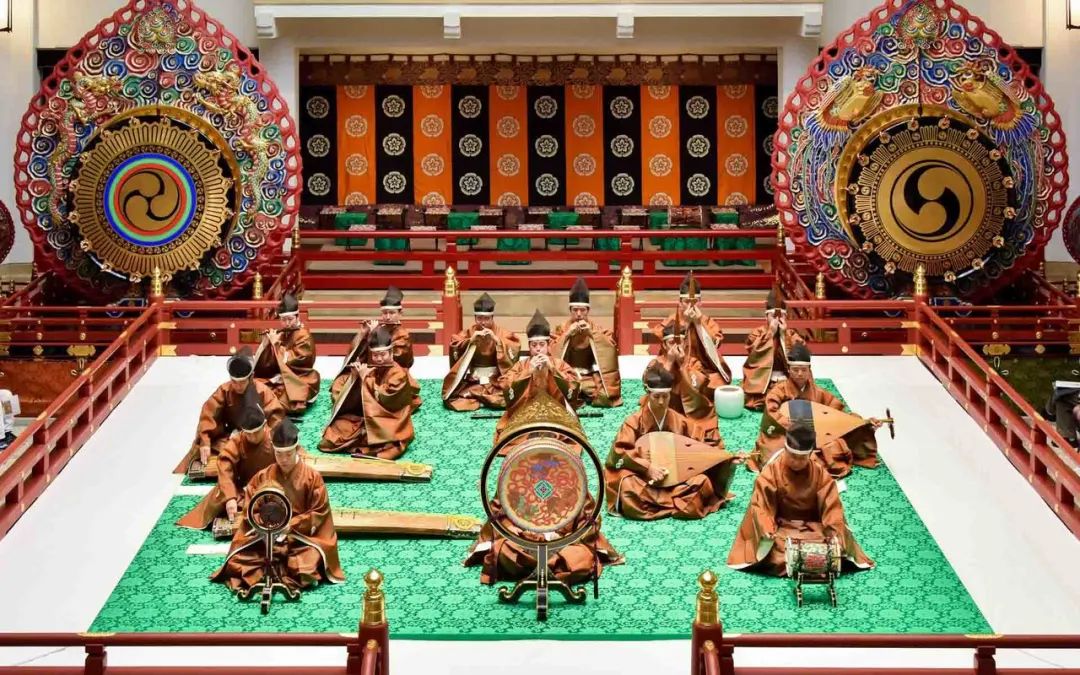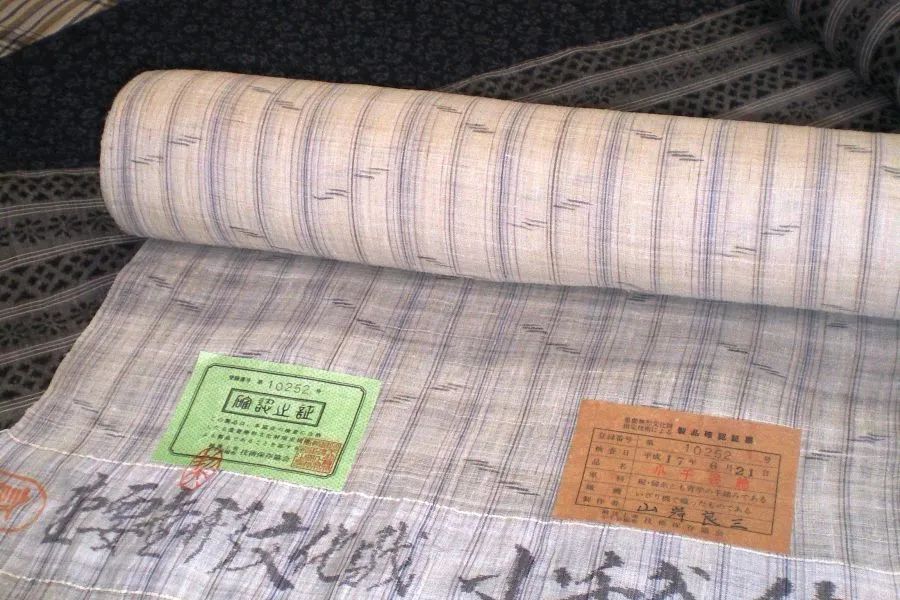日本21项非物质文化遗产大多为歌舞
- 2021-06-02 14:21:12
- 点赞量:5892
- 点击量:88455
- 作者:秘书处Secretary's Office

非物质文化遗产是联合国教科文组织认定的,对某个地区的文化传承有着重要意义的行为或者表现。2003年10月,联合国教科文组织在巴黎举行的会议上通过了《保护非物质文化遗产公约》,公约规定,非物质文化遗产主要包括以下几个方面:
Intangible cultural heritage is recognized by UNESCO, and it has important behavior or performance for cultural heritage in a certain region. In October 2003, UNESCO adopted the Convention on the protection of intangible cultural heritage at its conference in Paris, which stipulates that intangible cultural heritage mainly includes the following aspects:
表演艺术
Performing Arts
传统手工艺
Traditional handicraft
社会实践、仪式、节庆活动
Social practice, ceremony and festival activities
有关自然界和宇宙的知识和实践
Knowledge and practice of nature and universe
口头传统和表现形式,包括作为非物质文化遗产媒介的语言
Oral traditions and expressions, including language as a medium of intangible cultural heritage
日本共有21项非物质文化遗产,除此之外,日本国内还有重要无形文化财认定制度,在国内重要传统文化及其技艺上登峰造极的人或团体等即为所谓的“人间国宝”,目的在于加强保护和传承。今天就来向大家介绍一下由联合国教科文组织确定的日本21项非物质文化遗产。
Japan has 21 intangible cultural heritage. In addition, there are important intangible cultural property identification system in Japan. The so-called "human national treasure" is the so-called "national treasure of human beings" in the country, which is called "national treasure of human beings" in terms of the peak of the important traditional culture and its skills in Japan. Today, let's introduce 21 intangible cultural heritage sites in Japan, which are determined by UNESCO. 01 nenglio
01能乐
能乐在2008年入选,是日本的传统艺能之一。能乐是能剧和狂言的合称。能剧形成于4世纪前后,在演出中,登场人物身着面具与华丽的装束,应和笛子及打击乐器的器乐演奏,凭借台词和舞蹈推动故事情节的发展。狂言以人物之间的对话展开剧情,剧作多以日常生活的琐事为题材,故事富于幽默,带有讽刺,将人物形象脸谱化,加以夸张的动作和表情,诙谐生动地描写平民百态。
Neng le was selected in 2008 and is one of the traditional arts and crafts in Japan. Nenyue is a combination of the drama and the madness. The show was formed around the 4th century. In the performance, the characters on the stage, dressed in masks and gorgeous costumes, should play with the flute and percussion instruments, and promote the development of the story plot by lines and dance. The story is full of humor and satire. It makes the characters face-up, exaggerates their actions and expressions, and describes the common people's various forms in a humorous and vivid way.

02人形净琉璃文乐
02 human shape pure glaze culture music
人形净琉璃文乐也是在2008年入选,是结合日本三弦配乐和义太夫节所展开的音乐木偶剧,和歌舞伎、能乐并称为日本三大传统艺术,有着超过300年的历史。净琉璃中的木偶由三个人合力操纵,分别是负责人偶脚步动作的“足遣”、操纵左手动作的“左遣”以及操纵人偶头部和右手动作的“主遣”。这3人的具体搭配,会根据舞台不同有所不同。
The human shape pure glaze music was also selected in 2008. It is a puppet play which combines Japanese three string music and the yitaifu Festival. It is also known as three traditional Japanese arts, with a history of more than 300 years. The puppet in the pure glaze is controlled by three people, which are the "foot dispatch" in charge of the foot movement of the puppet, the left hand movement and the "main dispatch" for the head and right hand movements of the puppet. The specific collocation of these three people will vary according to the stage.

03歌舞伎
03 Kabuki
歌舞伎在2008年入选,据说最早可以追溯到1603年在京都以阿国为中心演出的戏剧。歌舞伎的演员全都是男性,直到现在还在延续江户时代歌舞伎鼎盛时期的演出风格,包括表演方式、服装、化妆和台词等都继承了当时的传统。夸张的脸谱是歌舞伎的一大特点,通过脸谱来表现不同人物的性格和善恶,观赏性很强。
Kabuki was selected in 2008 and is said to be the earliest drama to be performed in 1603 in Kyoto with a country as the center. The actors of Kabuki are all male. Until now, they still continue the performance style of the heyday of Kabuki in Edo era, including the performance style, clothing, makeup and lines, etc. all inherited the tradition of that time. Exaggerated face is a major feature of Kabuki. It shows the character and good and evil of different characters through facial expressions, and has strong ornamental character.

04雅乐
04 Yale
雅乐在2009年入选,是日本的一种传统音乐,最初从5世纪至9世纪由中国大陆和朝鲜半岛传入日本,后来和日本本土的音乐相融合而成。现在,雅乐主要以宫廷音乐的形式保存了下来,国立剧场有定期的雅乐公演。
In 2009, Yale was selected as a traditional music in Japan. It was first introduced from Japan to Korea on Chinese mainland and Korea from fifth Century to ninth Century. Now, the music is mainly preserved in the form of court music, and the National Theater has regular Yale public performance.

05小千谷缩·越后上布
05 small thousand Valley shrinking · more and more back cloth
小千谷缩·越后上布入选于2009年,是新潟县鱼沼地区制作的一种以苎麻为原料的上等麻织品。苎麻材质的布料,质量好重量轻,适合日本潮湿的夏季。新潟县鱼沼地区的人们在寒冷的冬季开始制作,手工抽取苎麻纤维,捻成线,和棉线捆成一束,织出几何或花朵图案。之后用热水清洗布料,用脚加以压揉,再将湿的织物放置在积雪处约10至20天,使其变得光亮柔软。
Xiaoqiangu shrinkage · Yue post cloth was selected in 2009, which is a kind of superior ramie fabric made in yumarsh area of Niigata county. Ramie fabric, good quality and light weight, suitable for wet summer in Japan. People in the yumarsh area of Niigata county began to make in cold winter, and they manually extracted ramie fiber, twisted into a thread, and tied them into a bundle of cotton threads to weave geometric or flower patterns. Then wash the cloth with hot water, press it with feet, and then place the wet fabric in the snow for about 10 to 20 days, making it bright and soft.

06奥能登田神祭奥能登田神祭入选于2009年,是石川县珠洲市和轮岛市凤珠郡能登町及穴水町举行的一种田祭仪式,世代相传,每年举办两次。为了庆祝丰收,每年12月时,农民会准备洗澡水及食物,再在田间发出像是捶制年糕的声响,邀请稻神前来分享。在每年2月播种前,也会举行类似的仪式以确保当年的丰收。奥能登的稻神祭反映了日本自古以来种植稻米的文化。
The Olympic energy God sacrifice, which was selected in 2009, is a kind of field sacrifice ceremony held in Zhuzhou City, Shichuan county and nengdeng town and Shuiding, Fengzhu County, lundao city. It is said from generation to generation, and held twice a year. In order to celebrate the harvest, in December, farmers prepare to bathe water and food, and then make sounds like thumping rice cakes in the field, inviting rice gods to share. Similar ceremonies will be held before sowing in February to ensure the harvest of the year. The rice God sacrifice of ornoden reflects the culture of rice cultivation in Japan since ancient times.

07早池峰神乐
07 morning pool peak divine music
早池峰神乐入选于2009年,是由早池峰的修验道行者的舞乐衍化而来,是“岳神乐”和“大偿神乐”的总称,用来祈愿生活安泰、五谷丰收,距今已经有500多年的历史了。每月第2个周日,大迫交流活动中心会举办岳神乐、大偿神乐和八木卷神乐的公演。
Early Chi peak Shenyue was selected in 2009, which was derived from the dance music of the practitioners of the practice of the early Chi peak. It is the general term of "Yue Shenyue" and "great satisfaction divine music". It is used to pray for a peaceful life and a harvest of five valleys. It has a history of more than 500 years. On the 2nd Sunday of each month, the grand forcing exchange center will hold public performances of Yue Shenyue, Dajin and Bamu volumes.

08秋保插秧舞秋保插秧舞入选于2009年,是仙台市太白区秋保町的汤元、长袋、马场这3个地区插秧舞的总称,同样是用来祈求丰收的。插秧舞至今仍保留着传统的曲风,古趣横生。插秧舞原于元宵节举行,以此祈求当年五谷丰登,现在也在神社、庙宇祭典等场合进行表演。
Autumn protection seedling dance autumn Bao transplanting dance was selected in 2009, which is the general name of Tangyuan, long bag and horse farm in qiubaoding, Taibai District, Xiantai city. It is also used to pray for a good harvest. The traditional folk music is still preserved in the transplanting dance, and the ancient interest is living in the world. Yanghua dance was held on Lantern Festival, so as to pray for the harvest of the year. Now, it also performs in shrine, temple ceremony and other occasions.

09女孩舞蹈节女孩舞蹈节入选于2009年,是为了吸引来自其他城市的水手驻足,在神奈川县的三浦发展出来的舞蹈节,用来庆祝新年,祈求财富和渔获,到18世纪中叶,已经成为了当地女孩的特色活动。表演时,由五至十位40至80岁不等的妇女清唱,另外有五至十位年龄在10至20岁之间的,穿着和服的少女和着歌声表演舞蹈。舞者面对面成两行,或者围成一个圆圈,以扇遮面,一起拍响竹枝,所以这种舞蹈名为“チャッキラコ”,表现的就是竹枝的响声。
The girls dance festival was selected in 2009 to attract sailors from other cities to stop. It was developed in Sanpu County of shennaichuan county to celebrate the new year and pray for wealth and catch. By the middle of the 18th century, it has become a special activity for local girls. During the performance, from five to ten women aged 40 to 80, there were five to ten girls aged 10 to 20, dressed in kimonos and singing to perform dance. The dancer faces face to face in two lines, or is surrounded by a circle, covered by a fan, and claps the bamboo branches together. Therefore, the dance is called "the" Zhuzhuo ", which is the sound of the bamboo branch.

10大日堂舞乐大日堂舞乐入选于2009年,是每年1月2日在秋田县鹿岛市的八幡平大日堂演出的一种舞乐形式。大日堂舞乐是秋田县最古老的舞乐庆典活动,距今已经有1300多年的历史了,表演者被称为“能众”,由四个村落分别继承了不同的舞蹈,世世代代传承了下来。
The 10 day dance day dance music was selected in 2009, which is a dance form performed in bafanping Dayang in Ludao City, Qiutian County on January 2 every year. Daytang dance is the oldest dance celebration in Qiutian county. It has a history of more than 1300 years. Performers are called "can masses", and they have inherited different dances from four villages, which have been passed down from generation to generation.

11题目立
11 Title Establishment
题目立入选于2009年,是奈良市在八柱神祭时的一种祭祀活动,起源于奈良市的八柱神社。题目立在表演时以源平武将为题材,由年轻的男性穿上那个时代的武士服,站成半圆形的队伍。首先由一个长者讲述源平合战的故事,以及故事中各位角色的名号,然后这些表演者分别讲述角色的经历,在讲述的时候需要使用独特的腔调,并且没有音乐伴奏。讲述完毕后,大家再有节奏地跳舞吟唱。题目立的举办时间是每年的10月,最开始只有上深川地区的人在当地举办,而现在已经成为了奈良市民努力延续的传统活动,也成为了奈良山区独特文化的代表。
The title was selected in 2009, which was a kind of sacrifice activity in Nara City during the eight pillar God sacrifice, which originated from the eight pillar shrine in Nara. The theme was set up in the performance, with the theme of Yuanping general, and the young men dressed in the samurai uniform of that time and stood in a semi-circular team. First, an elder tells the story of the yuan Pinghe war and the names of the characters in the story. Then these performers tell the story of the characters separately. They need to use unique tone and no music accompaniment when they tell them. After the story, we dance and sing rhythmically. The time of the Title Establishment is October of each year. At the beginning, only people in Shangshen Sichuan are held locally. Now, it has become a traditional activity that the citizens of Nara have tried to continue, and also become the representative of unique culture in the mountainous area of Nara.

12阿依努古式舞蹈
12 Ainu dance
阿依努古式舞蹈入选于2009年,是来自北海道的一项传统文化活动。阿依努人是北海道的原住民,他们的古式舞蹈主要会在庆典或者宴会的时候演出,和他们的生活以及文化是密切相关的。他们在表演的时候围成一个圆,有一些舞蹈动作会模仿动物的动作及叫声,还包括大量仪式性的剑舞和弓舞,甚至还会加入即兴表演。
Ainu style dance was selected in 2009, and is a traditional cultural activity from Hokkaido. Ainu people are native people of Hokkaido. Their ancient dance mainly performs in celebration or banquet, which is closely related to their life and culture. They are surrounded by a circle during the performance, some of which imitate the animal movements and sounds, including a large number of ritual sword and bow dancing, and even improvisation.

13组踊
13 groups active
组踊入选于2010年,是来自冲绳的一种舞剧。组踊诞生于18世纪初,当时的冲绳还是琉球王国,早先是为了款待中国皇帝的使节时表演的舞蹈,本来是由士族子弟表演,明治以后出现在市井的舞台,并被传承至今。如果想要欣赏这种舞蹈,可以去冲绳的国立剧场,非常方便。
Group was selected in 2010, which is a dance drama from Okinawa. Group enthusiast was born in the early 18th century. Okinawa was still Ryukyu Kingdom. It was performed in order to entertain the Chinese emperor's envoys. Originally performed by the descendants of the scholars, it appeared on the stage of the market after Meiji, and was passed on to the present. If you want to enjoy this dance, you can go to Okinawa National Theater, which is very convenient.

14结城捻线丝绸(结城紬)
14. Twist silk (Jiecheng)
结城捻线丝绸来自于日本的茨城县的小山市等地区,入选于2010年。茨城县古时被称为常陆国,而编制茧绸从很早就开始了,在室町时代的末期被称为“结城茧绸”,到了江户时代,作为当地一种有名的特产而产量巨大。捻线丝绸制作工艺比较复杂,成品会给人一种朴素的感觉,轻柔保暖,穿着舒适。结城捻线丝绸和上田捻线丝绸及大岛捻线丝绸并称为“日本三大捻线丝绸”。
The twist silk from Japan from the prefecture of ishima, Japan, selected in 2010. In ancient times, Zicheng county was called Chang Lu state, and cocoon silk was made from a long time ago. It was called "Chengcheng cocoon silk" at the end of the period of muring. In the Edo era, as a famous local specialty, the production of cocoon silk was huge. The process of twist silk is complex, and the finished product will give a simple feeling, soft and warm, comfortable to wear. The twist silk of Jiecheng, the Shangtian twist silk and the big island twist silk are also called "Japan's three twist silk".

15壬生花田植
15 nonylus field planting
壬生花田植来自于广岛县山县郡北广岛町,入选于2011年。这是一个耕种活动,目的是祈求当年的丰收,举办时间为每年6月的第一个周日。据说早在镰仓时代,西日本就有了在种田之前举行田植仪式的习俗,使用太鼓和笛子伴奏,由少女来演唱田植歌。目前,壬生花田植是西日本现存的最大的田植仪式,表演时,由佩戴彩色花鞍、身披华丽饰品的耕牛犁田耕种,年轻姑娘们站成一排表演插秧。
The nonflower field was selected in 2011, which was planted in the town of Hiroshima, Shanxian County, Hiroshima county. It is a farming activity, which aims to pray for the harvest of that year, which will be held on the first Sunday of June every year. It is said that as early as the sickle period, western Japan had the custom of holding a field planting ceremony before planting the field. It was accompanied by Taigu and flute, and the girls came to sing the field planting songs. At present, the planting of non-native flowers is the largest field planting ceremony in western Japan. During the performance, the young girls stand in a row of rice transplants, which are cultivated by plowing cattle with colorful flower saddles and gorgeous ornaments.

16佐陀神能
16 zotuo God power
佐陀神能来自岛根县松江市的佐太神社,入选于2011年,是神社举行御座替祭时表演的祭神的舞蹈,类似于能乐,现在每年的9月24、25日两天在佐太神社进行表演。表演祭神舞蹈的目的是为了净化新的御座,好让神明能够安坐其上。佐陀神能是当地世代相传的舞蹈,为了能让这种传统的舞蹈形式保存下去,当地还成立了佐陀神能保持者会。
Zotuo God can come from the zotai shrine in Songjiang City, island root county. It was selected in 2011. It is a dance performed by the shrine during the imperial seat replacement sacrifice. It is similar to the music. Now, it is performed in zotai shrine on September 24 and 25 every year. The purpose of performing the dance is to purify the new throne so that the gods can sit on it. Zotuo can be a dance that has been passed down from generation to generation. In order to keep this traditional dance form, the local government has established the zotuo God can hold the meeting.

17那智田乐
17 Zhitian music
入选于2012年,14-15世纪由京都的田乐法师传下来,原本是祈祷丰收时表演的艺能。是每年7月在那智大社的火祭中,用笛子和“缔太鼓”等乐器伴奏表演的舞蹈。
Selected in 2012, the 14th-15th century was passed down by the Tianle master in Kyoto, which was originally performed in praying for a harvest. It is a dance performed with flute and bantaigu in the fire sacrifice of Zhida society in July.

18和食
18 and food
和食入选于2013年,因为和食和日本的传统文化和生活习俗息息相关,体现出了日本人尊重自然的精神,以食材新鲜丰富、营养搭配均衡而闻名。和食其实是一个很大的概念,主要指的是传统的、日本人日常的传统饮食,主要是江户时代和明治时代形成的饮食文化。另外,因为和食的器具有很强的美感,再加上对于摆盘的讲究,也被称为「目で楽しむ料理」(用视觉享受的料理)。
He food was selected in 2013, because it is closely related to the traditional culture and living customs of Japan, which reflects the Japanese spirit of respecting nature and is famous for its fresh and rich food materials and balanced nutrition. In fact, he food is a big concept, mainly referring to traditional and Japanese traditional diet, mainly the diet culture formed in the Edo era and Meiji era. In addition, because of the strong aesthetic feeling of the utensils and the exquisite setting of the dish, it is also called "the eye and the happy food" (the food enjoyed by vision).

19和纸
19 and paper
和纸入选于2014年,包括埼玉县的细川纸、岐阜县的本美浓纸和岛根县的石州半纸三件,都是自古流传至今的造纸技术。制造和纸用的都是长纤维木材,在书道、绘画和折纸等方面都有着广泛应用,现在种类也是十分丰富,在日本各地都有特色鲜明的和纸。
He paper was selected in 2014, including saitamyu county's fine Sichuan paper, Qifu County benmei thick paper and island root County Shizhou half paper, are the paper technology that has been spread since ancient times. Both the manufacture and paper use long fiber wood, which is widely used in calligraphy, painting and origami. Now, there are also very rich types, and they have distinctive and paper features in all parts of Japan.

20山、鉾、屋台行事山、鉾、屋台行事入选于2016年,主要指的是遍布日本各地的神社祭祀活动中的彩车巡游,入选的活动涵盖了日本18个地区,共33个巡游活动,其中比较有名的包括京都祗园祭的山鉾行事等。这种巡游活动属于神社祭典的一部分,目的是祈求消灾除厄,造型优美华丽的山、鉾、屋台充分发挥了日本的木工、漆工等技术,完美的工艺令人叹为观止。
20 mountains, Wutai, Wutai, Wutai, Wutai were selected in 2016, mainly referring to the color car tour in the shrine worship activities all over Japan. The selected activities covered 18 regions of Japan, a total of 33 tour activities, among which the more famous ones include the activities of the Kyoto Park sacrifice. This tour is part of the shrine ceremony, which is aimed at praying for disaster elimination. The beautiful and gorgeous mountains, 鉾 and roof platforms give full play to the Japanese carpentry and lacquer industry. The perfect technology is amazing.

21来访神
21 visiting God
来访神入选于2018年,全称为“来访神:假面、装扮的众神”,一共包括10个传统的民俗节庆活动,这些活动多数集中在正月。来访神是由扮演者头戴面具,身穿特定的服装,装扮成神灵,从外界走进村落,访问各家各户。他们是传承于民间信仰之中的众神,只在每年的某些特定日子现身。
The visiting gods were selected in 2018, which is called "visiting gods: disguised gods and dressed gods", which includes 10 traditional folk festivals, most of which are concentrated in the first month. The visiting God is a mask, a specific dress, a deity, from the outside into the village, visit each family. They are gods who are inherited from folk beliefs and only appear on certain days of each year.








0 条 评 论 Write a Response